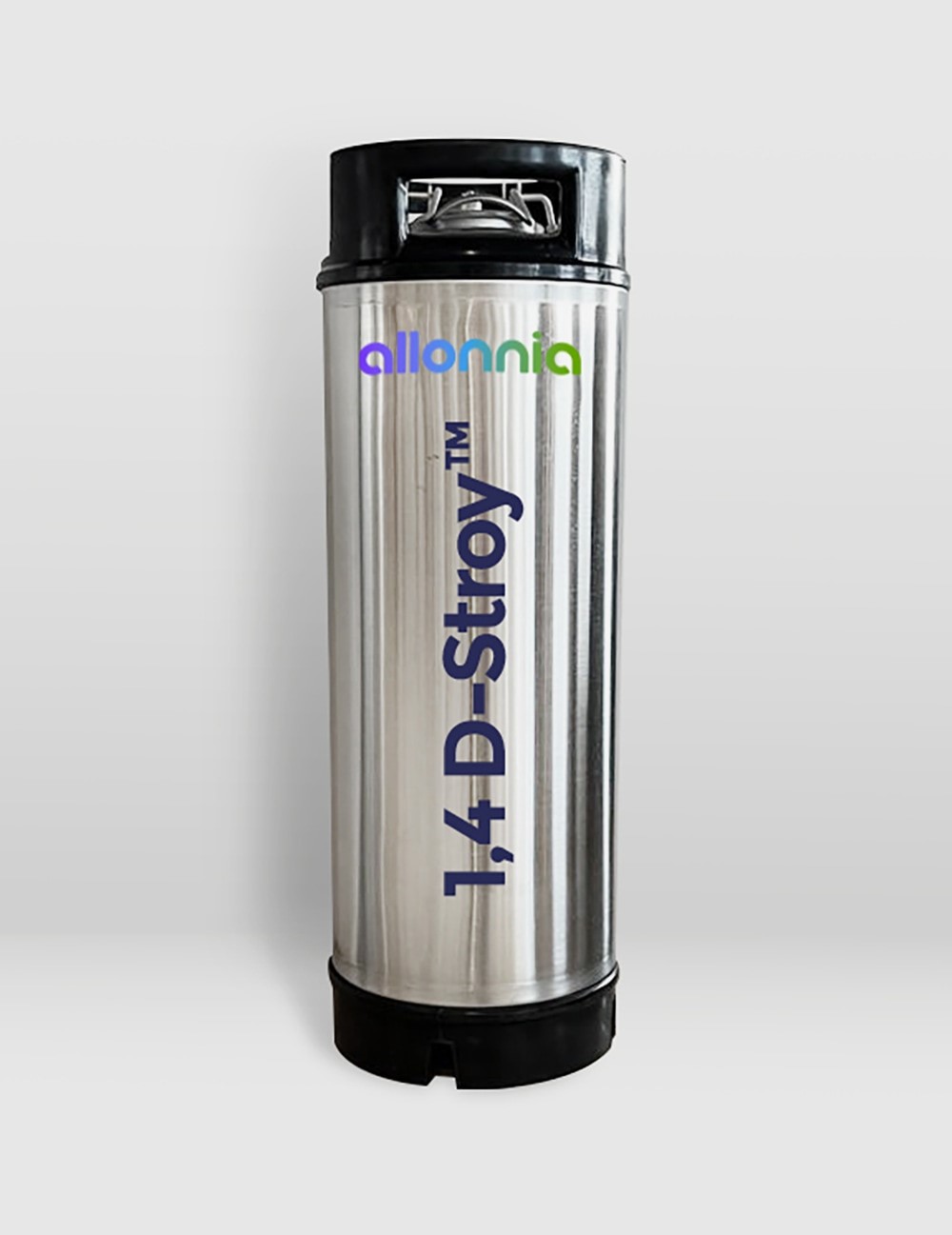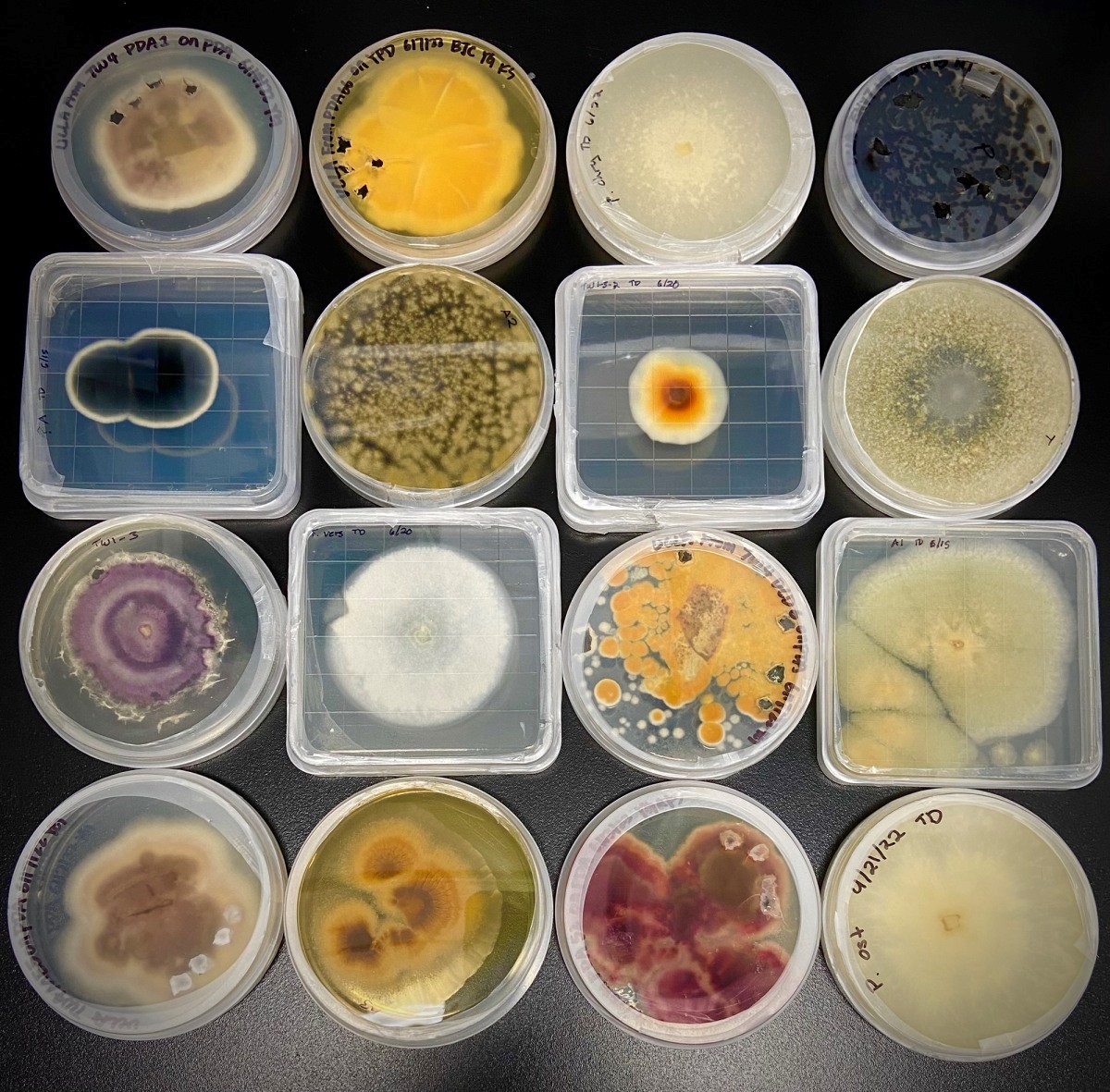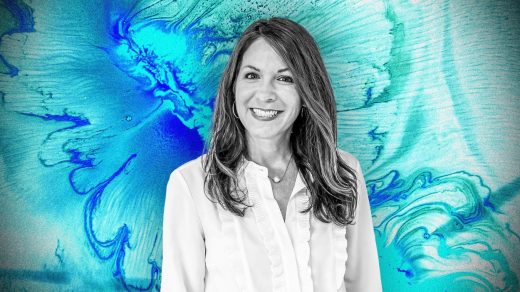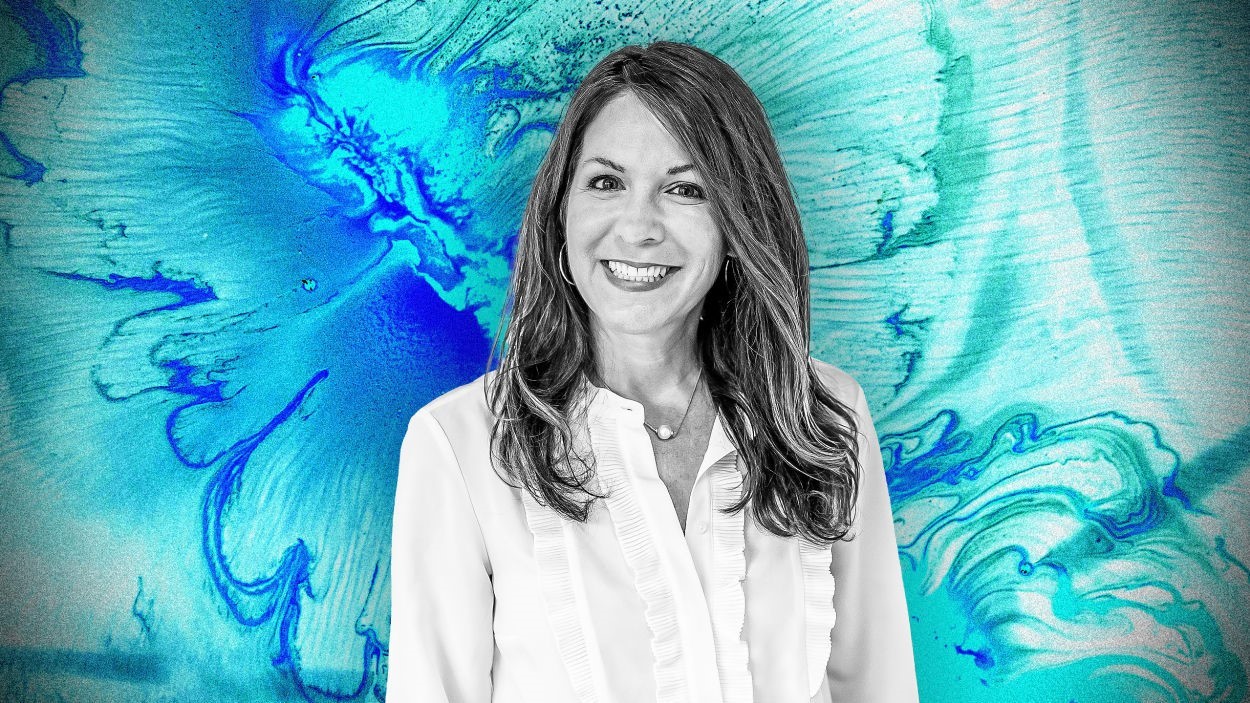This CEO wants to get forever chemicals out of our water—and bodies
Forever chemicals, known scientifically as PFAS, are typically traced back to the late 1930s and a DuPont innovation, which the chemical company branded “Teflon.” Given its oil- and water-resistant properties, this seemingly miraculous substance allowed for the creation of the nonstick pan. It was emblematic of the creations of the American Century, which improved people’s day-to-day lives but came with longer-term health risks.
As we have since learned, forever chemicals—of which there are now more than 10,000—can have deleterious health effects, even at low levels of exposure. The EPA has a strategic roadmap to protect the public from these effects, particularly in drinking water, with $1 billion from the bipartisan infrastructure law earmarked for clean water.
It is fitting that Nicole Richards is CEO of the “bio-ingenuity” startup, Allonnia, which is particularly focused on neutralizing the effects of PFAS and other chemicals, such as 1,4-Dioxane, as her job before joining Allonnia was at DuPont, where she was the growth, strategy, and M&A director in the $33 billion market cap company’s water solutions business. “PFAS and Teflon, I thought those were good things,” Richards says. “The more I’ve been in the industry and the more [experience] I’ve accumulated, I’ve realized that there is a downside.”
Allonnia has raised $90 million to date, including $30 million in July to accelerate its R&D, to find novel solutions to not only remove forever chemicals from water but also address waste issues in the metals and mining sectors as well as in plastics. Several governmental agencies, including the EPA and Department of Health and Human Services, have concluded that 1,4-Dioxane is a likely human carcinogen. “1,4-Dioxane being in 20% of our drinking water . . . these have really negative effects,” says Richards. “But we can find the solutions. There’s an optimism and a hope that is to be conveyed in the public, to know that it’s not all doom and gloom. We do have problems, but we can solve those problems.”
Fast Company spoke with Richards in late summer about Allonnia’s clever products to eliminate these chemicals from our water supply. This conversation has been edited for content and clarity.
Fast Company: What was your journey to becoming the CEO of Allonnia?
Nicole Richards: I came to Allonnia after about 27 years mostly in the chemical world. I’m a chemical engineer by background and spent those years in everything from R&D to other technical roles, and then moved into commercial roles and managing businesses in companies like DuPont, which was the last company I worked with. I worked in a number of industrial fields, with the guiding principle of making manufacturing processes more efficient or [enhancing] products to have added features or values.
Allonnia was founded in 2020 as a spinoff from Ginkgo Bioworks [a $3.5 billion market cap bioengineering company that works across agriculture, pharma, and industrials]. Our mission is to create and deploy transformational biological solutions for the world’s toughest environmental challenges. That’s what drives us every day.
I’m really passionate about our environment and have seen where those chemical and mechanical treatments have reached their limits, in terms of performance but also their environmental footprint. This technology that we have available to us now—synthetic biology—wasn’t around 20 years ago. There’s so much more possible than what we’ve explored [previously] to create new products that are not only environmentally friendly, but healing.
FC: How did you decide to focus on water—and why now?
NR: Bioremediation has been used for hundreds of years, using natural biology for our water treatment systems and for our land applications. But that can take hundreds of years. When you take that and fast-forward the ability that nature has as a starting point, that’s really the area that we lean into where you can’t do that chemically.
We’re taking an industry that’s used to bioremediation and we’re putting in this technology that is really advanced that’s never been used, which is a great combination. The areas that we are working on are the emerging contaminants. There hasn’t been a way to break down PFAS chemically. Same thing with 1,4-Dioxane.
FC: How did you figure out how to address 1,4-Dioxane?
NR: One of the products we just launched—1,4 D-stroy—degrades 1,4-Dioxane. We have identified a natural organism that breaks [it] down. That’s common in bioremediation. What we’ve done is taken this organism that uses it as a food source and figured out the environment that it needs to survive. This one is pretty simple: It’s an aerobic environment. So you feed it a little bit of oxygen and some additional nutrients, and then it metabolizes the 1,4-Dioxane.

You might wonder, why would you engineer something like this? Why would you need to use synthetic biology? So that application that I just described takes about four days to degrade 1,4-Dioxane. But there are some applications where you want that to happen in an hour. You don’t want to wait four days because you have a lot of water that you need to decontaminate really quickly. So you identify what is the mechanism in that organism, the enzyme that it’s using, to break that contaminant down and engineer more of that into the organism.
That’s where the engineering piece comes in. There are lots of reasons why you would engineer. Maybe there’s another contaminant you want to degrade at the same time as 1,4-Dioxane and you want one organism to do it. Another area that we’re looking at is tagging it with a fluorescent protein so that you can more quickly identify where that organism is.
FC: What’s that discovery process like? Where do you go about finding these bacteria?
NR: We call our scientists nature’s detectives. So if you come to our lab [in Boston], you would find we’ve got dirt samples all over. We’ve also got mining ore samples, water samples. Let’s use PFAS as an example. So we’ll go to a highly contaminated PFAS site. A lot of times, those are around airports because they’re using firefighting foams [which contain PFAS to combat fires of flammable liquids]. Then we look for what has an affinity to be degrading, and we isolate those organisms that are in those soil samples.

This kind of goes back to the principle that nature heals itself. There’s something in that sample that started doing the work that you wanted to do. You have to find those organisms out of the billions that there are. Usually there’s not just one; there might be hundreds or dozens. That first part is a pretty manual process. But once we start to look at the ones that are working most effectively, then we really start the development from there.
FC: Where do these organisms go afterwards? Do they just keep living in the soil or water?
NR: I’m a visual person, so one of the slides I use [in presentations shows that] there are more organisms in a teaspoon of soil than there are people on the planet. Our environment is teeming with organisms, and so [Allonnia’s] organisms just join their brethren and live in the environment. Our job is to prove that they’re safe and healthy, and they’re not going to harm the ecosystem that we’re deploying [them] into.
FC: Can you talk a bit more about the current solutions, or lack thereof, for removing forever chemicals?
NR: The current systems are most typically reverse osmosis membranes, ion exchange resins, or granulated, activated carbon. At a super-high level, the water comes in, it gets trapped [in one of these media], and then the clean water comes out the other side, and then your PFAS is on your media. Historically, that media has gone to an incinerator and they burn it. Or it goes to a landfill. The problem with that is you’re just putting that contamination back in the environment. If you put it back into a landfill, it’s leaching into your groundwater.
So it just keeps going back in a cycle. Now that PFAS has been elevated in terms of its human health issues, people have realized that’s not an adequate treatment. The SAFF [Surface Active Foam Fractionation] technology that we’re using uses air to separate out the PFAS from the water so that then you can collect the PFAS that’s not on a media and degrade or destroy it. You’re eliminating that media that is contaminated. That’s how it’s been done and how it’s possible to do it today.
FC: So it’s trapped in the air bubbles? Where does it go after that?
NR: PFAS has hydrophobic and hydrophilic ends to it, which is how it gets separated in the air bubble. Then it floats off. We collect these, and this SAFF technology concentrates it a million to one. You are now down to a very small volume of highly concentrated PFAS.
What we are working on now is a way to biodegrade that. We’re working on enzymes that will then break that down. There are other technologies to degrade or destroy [the concentrated PFAS] starting to come out on the market, things like super critical water oxidation and a few other kind of high-energy destruction sources. All of those are better than incineration and landfill. We’ve got the biological solution we’re working on for degradation. There are also some more mechanical ways to destroy it. They’re all brand-new technologies, though. This is all new science.
FC: I know that especially in science, there are so many challenges you face along the way. Can you elaborate on some of the obstacles and most difficult things you’ve had to face?
NR: You probably know this from your studies too, but biology takes time. It’s not like a chemical reaction; [it] takes months to figure out. The time it takes for development, I would say is longer than what I would have expected getting into this field. You can only speed it up so much. What we have found is that what we thought would take one year, takes three; and what we thought would take three years is taking six. It’s just a pretty lengthy development process. There are some things that can be sped up, and some things that can’t.
FC: You said you might have a third product coming out. Are you able to elaborate on that?
NR: We’ve been working on a PFAS biosensor. For us, the PFAS solution has three parts. It’s separating and concentrating it. That’s technology we launched. It’s degrading it; that’s what we’re working on now. Then, the other piece of that puzzle is sensing it.
What happens today is that if you want to know if you have PFAS in your water, you take a sample, you send it to a lab, and you wait four to six weeks and you pay, like—I don’t know—call it $400 a sample. It takes forever for these results to come back. If you’re treating water and you want to know if your treatment system is working, you’re basically treating water for a month before you figure out if it’s working or not.
So what we are coming up with is a handheld biosensor. You can put your water with your PFAS in it, or hopefully no PFAS in it. You put it in a detector, and it tells you right away if you have seven parts per trillion, you have a hundred parts per trillion, or you have nothing. That’s the third product that we’re launching this year.
FC: And is that more aimed toward regular consumers or larger companies?
NR: We’re focused right now on industrial partners. The likely cost of one would be something that your normal household isn’t going to . . . it’s not like a pH stick right now. Hopefully, with further development, we can get it down to a price point that it is a test that costs a couple of dollars, but right now we are trying to get it to be a cost-effective equivalent to sending [a water sample] out to a lab, but with immediate results.
FC: On your website, there’s a quote that particularly resonated with me, which was, “To us, waste is a failure of imagination.” What does that mean to you?
NR: We have [that quote] on the back of our T-shirts; we have it on our mugs. It’s really motivating to know that we don’t have to look at a mattress in a landfill and see that as waste. We can see that as a raw material for a product. We don’t need to look at waste as something that is unusable. We can look at upcycling that waste into new products that both are saving our environment from the waste problem, but also recycling everything, using nature as inspiration. Nature recycles everything in a circular economy—that’s what we want to do. We want to take that power of nature and be able to upcycle and recycle everything we have.
(6)



